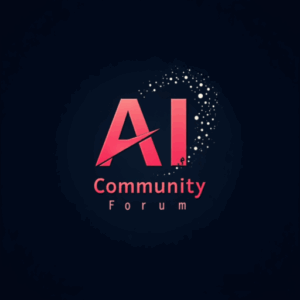India is emerging as a global force in software development, and the next six months could further define how developers across the region build, scale, and maintain digital systems.
Speaking with AIM, Anupam Mishra, director for developer programs for India and South Asia at AWS, shared how AI, open protocols, and a growing developer community are driving these shifts.
AWS sees developers not just as coders but as key contributors to the digital economy. “Developers have an outsized impact on the economy. They’re the ones creating products that go on to become large companies and successful startups,” Mishra said.
Mishra, citing Evan Data Corporation, said that India has the second-largest population of developers. “We believe there’s never been a better time to be a developer,” he said.
He added that with AI coding tools like Amazon Q, the job of developers has never been easier. For instance, Persistent Systems, an AWS customer, used Amazon Q Developer to upgrade legacy Java code. “The process was 83% faster than doing it manually,” Mishra said.
Mishra further added that AWS is also introducing agentic tools that do more than just suggest improvements. “Agentic capabilities are becoming more common, where developers expect AI not only to tell them what to do but also to act on it,” Mishra said.
Tools like Amazon Q Developer now come with agents for code and security reviews. “Sometimes, as a developer, it’s hard to think about all possibilities. The tool looks at vulnerabilities that have happened in the past and highlights them,” he said.
Notably, the company recently announced the general availability of AWS Transform, a new AI tool to accelerate the migration and modernisation of enterprise workloads.
The company said it helps organisations complete transformation projects up to four times faster by automating complex migration tasks through agentic AI. The service supports modernisation for key enterprise platforms, including VMware, mainframes, and .NET applications.
Mishra said it allows developers to focus more on design and building things that truly matter. “We’re supporting them with AI tools to drive this productivity, whether it’s Java upgrades, moving away from legacy systems like mainframes, or even transitioning from older platforms like VMware,” he added.
Mishra said tools like Q Developer and CodeWhisperer are continuously updated based on developer feedback. He said developers using AWS’s .NET modernisation tools reported four times faster conversion speeds from Windows to Linux. “79% of change requests generated are accepted without modification,” he added.
The .NET agent supports porting Windows-based applications to Linux, potentially cutting operating costs by up to 40% by reducing licensing and maintenance requirements. It also transforms code, runs unit tests, and validates Linux-readiness, enabling parallel transformation of hundreds of applications.
The mainframe agent assists in decomposing monolithic z/OS COBOL applications into cloud-ready components. Meanwhile, the VMware agent helps enterprises avoid rising licensing costs by automating migration planning. Through automated discovery and dependency mapping, tasks that usually take weeks can now be completed in minutes.
Earlier this year, the company also launched Amazon Q CLI Developer Agent, an AI-powered command-line interface tool to accelerate software development workflows directly within the terminal environment.
Mishra said it enables developers to bring these AI-powered capabilities into their workflows, whether for testing, documentation, refactoring, or deployment. “The goal isn’t just to help with coding, but to make AI useful across the full lifecycle, from idea to implementation–removing repetitive tasks and helping teams become faster, more innovative, and agile.”
Last year, Amazon CEO Andy Jassy revealed that by leveraging Amazon Q, the company was able to save 4,500 developer years of work. He said that in under six months, the company has been able to upgrade more than 50% of its production Java systems to modernised Java versions at a fraction of the usual time and effort.
“We had developers from one of our teams who had to upgrade a lot of code from older versions of Java. We use a lot of Java — Java 7 and Java 8 — and it would have taken almost 4,500 years to convert that in a normal way, but it was done in a matter of days,” said Mishra.
Open Protocols and New Developer Workflows
Another growing area is the use of open protocols to connect AI tools with external systems. AWS recently launched support for MCP (Model Context Protocol), which lets generative AI agents interact with databases, developer tools, and more.
“If you’re a developer and have a PostgreSQL database, you can now say ‘Find the number of students’ and the agent can interact directly with the database. Earlier, it couldn’t,” Mishra said. “MCP allows our tools, or generative AI, to talk to several tools in a conversational manner. It now has more context available.”
Amazon Q Developer CLI (a command-line interface tool for developers) can now connect to MCP tools — either via AWS’s pre-built integrations or any MCP-compatible server that supports stdio (standard input/output).
The barrier to adoption is low. “It’s a small configuration change, just a few lines of code,” Mishra said.
Bullish on India
AWS is working closely with the community to build trust and ensure adoption. The company currently runs 26 user groups across India. “We have 250 AWS Heroes across 53 countries. 22 of those are in India,” Mishra said. These community leaders share feedback, test tools early, and engage in peer learning.
Looking ahead, AWS expects the adoption of natural language interfaces and agentic tools to grow. Mishra said that Amazon Q Developer now supports languages like Hindi as well.
An IDC report projects that 70% of digital solutions will feature natural language interfaces by 2028. “That’s a forward-looking projection, but we’re already seeing it take shape,” Mishra said.
India’s developer ecosystem is not just keeping pace. It is influencing how software is built globally. With a strong community and growing access to cutting-edge tools, the role of developers is expanding beyond code. As Mishra put it, “It’s an economy shaped by developers.”



